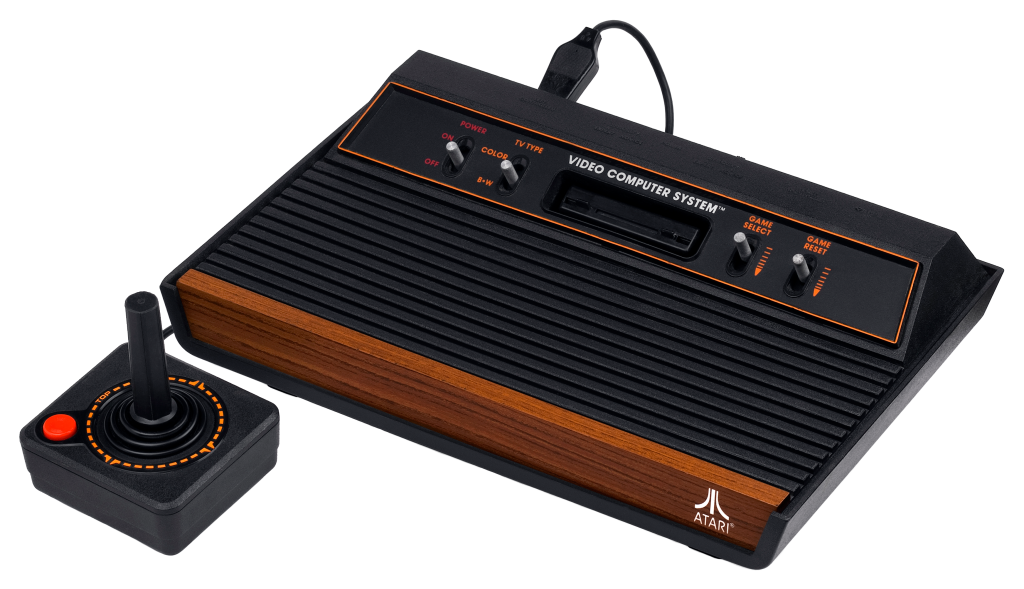Last updated on August 20, 2014
Thanks to a rather heated Theology Gaming University discussion (sparked by this Jenn Frank blog post), I’ve been thinking about the “pause” function. Due to the increase of virtual worlds, the pause button of old has faded away, replaced by pop-up menus and a general inability to move away from the game. At the same time as this emphasizes the immersion in an emergent world, it also makes gaming far less convenient than it used to be for people with real world obligations. Is this true?
Strangely enough, the history presents a much more complex picture than we might realize. It should be obvious that early home and arcade games didn’t have a pause button; for Pong, you’d simply shut the device off, as you would on any number of game you’d hook up to your television directly. Home consoles didn’t present a different picture for a long while; in fact, the most popular American video game system of the late 1970s, the Atari 2600, did not contain any sort of pause function. As it wanted to replicate the arcade experience, and players want to recreate the same sort of play as much as possible, it isn’t out of the question that the very notion of “pausing” a game wouldn’t come up. Bizarrely enough, the same goes for vinyl players and the like – nobody thought this sort of thing was important, whether because they couldn’t imagine it or it wasn’t seen as necessary. The Atari 5200, on the other hand, introduced the Pause button concept itself to a wide audience.

So what exactly do we mean by “pausing”? Generally, we mean the game stops so we can take a leak, or perform some necessary real-life function. Pausing arose as a measure of convenience for something in your home, similar to the advent of VCR and 8-tracks. This makes perfect sense for most entertainment media – if you’re experiencing it in your home, you own it, and in some sense control the whims of the experience. Unlike a concert or a theater, you need to do real things in real life, and any electronic entertainment product that allows you to pause at a moment’s notice presents a great boon for those with busy lives, families, and whatnot. Although none of these things were originally designed with such functions, they arose out of the needs of the consumer.
Video games, interestingly, are starting to backtrack on this “pausing” trend. The Internet’s possibilities have made dynamic worlds possible in which thousands of players will interact with each other and the environment simultaneously. Destiny is the latest in a long line of such video game experiences, placing that same dynamism in a first person shooter mold. The lack of pausing broke back into the mainstream, and this time for the purpose of intentional game design. With so many people playing at once, being able to pause a game turns into a huge inconvenience for the developers, even when it comes to single player instanced missions. They would literally need to change everything about the game for a small sideline experience, and that just doesn’t sit well in multi-million dollar game development. Why bother wasting resources on a relatively unimportant section of the game when the single player portions exist as tutorials to teach them about the open world multi-player? It just doesn’t make sense.
I perfectly understand the situation of those who complain about the lack of actual pauses, though. It’s the same reason why many older gamers hesitate to play MMOs, or play games without pausing unless you’ve got time handy, or even playing a JRPG that REALLY stretches the limits of patience with 70-hour timers. They just don’t design games with convenience in mind because they know their main audience will buy and play it regardless. It is a marketplace reality. Even if the game design itself doesn’t enforce that sort of choice, the market will. DYNAMIC EMERGENT WORLD is a pretty good back-of-box point, after all, and has been heavily used in the marketing campaign for Destiny. That design, then, works to their benefit on two levels: people love open worlds and active dynamic games like MMOs that allow interaction with other people. On the other hand, they can also market this to the people they know will buy it with the giant bullet points. It’s a win-win for them. In a AAA market averse to risk, that’s just the best play to avoid breaking the game or causing strange tonal inconsistencies.

On the other hand, a lack of pausing exists even in games with a primarily single-player component. Dark Souls forces you to find safe spots to pause, swap equipment, plan, and whatever else you need to do; the world continues to move while you pause to re-arrange yourself. The game would be easy to abuse otherwise, as players could swap equipment at a moment’s notice to avoid damage, use advantageous glitches (of which there are many, pre-patch anyway) and possibly break the game. It’s designed that way intentionally. Destiny, on the other hand, is basically an MMO with a persistent world – the lack of pauses even in single player stuff is to acquaint you with the online. Monster Hunter does a similar thing on Hunts in the single-player, which allow no pausing even on a tense hunt; good luck equipping that item while a dragon tries to bite your head off!
The lack of pause features actually aid game design and immersion, strangely enough. And yet, I find that many people simply cannot accept that this is the case. I understand, I really do, but I demand the best of the best video games, and adding such features would dimish the overall experience. “Pausing” turns into a game mechanic, or even a tool in the director’s palette, and he/she can do with it what they will.
